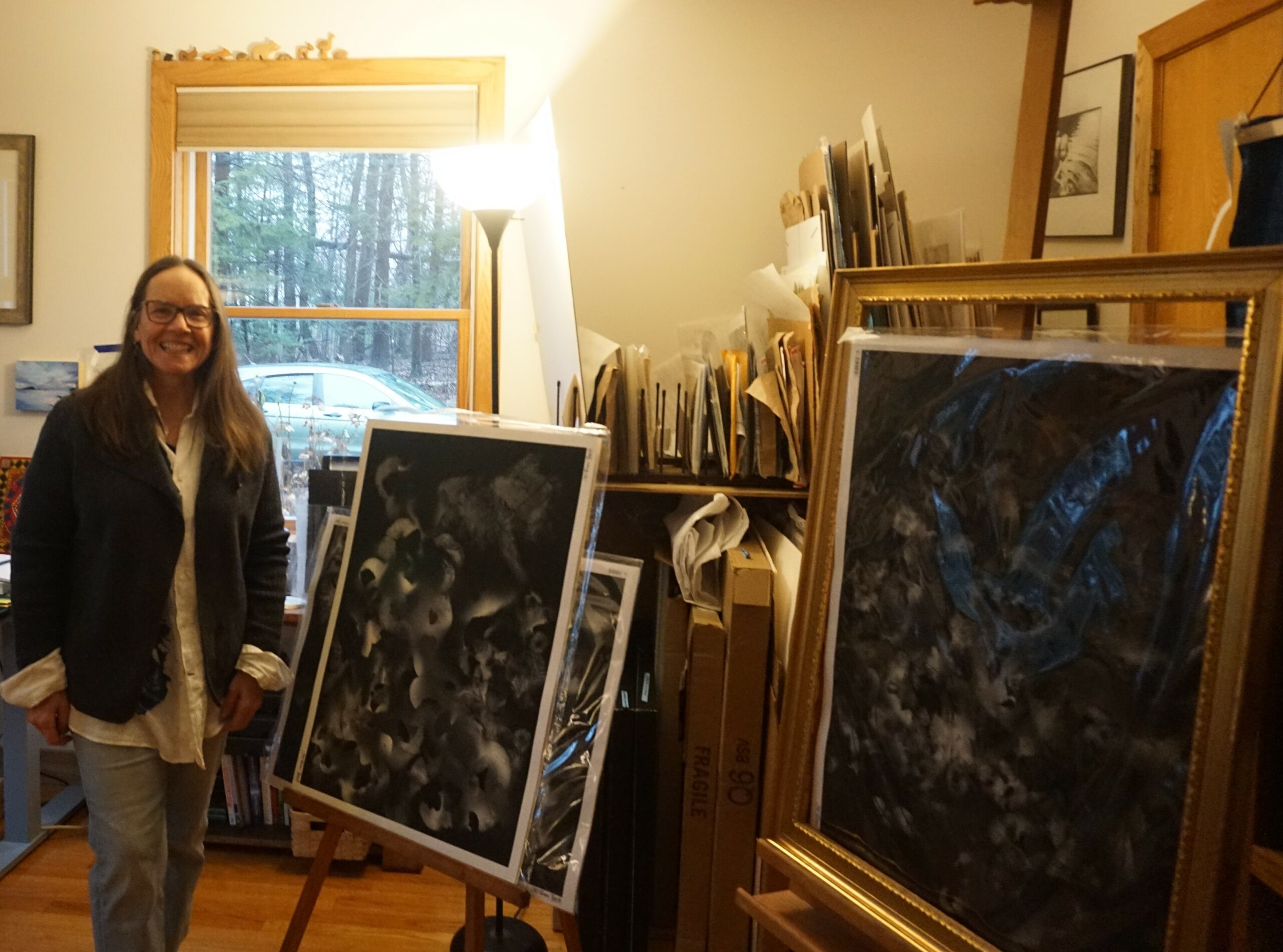With the prints of Madge Evers in Hidden Worlds: A New Herbarium, we see the fruits of fungi made evident in art—creativity through exploration, a cornerstone of both art and science. Evers collects organic materials for her prints. Impressions of plants and spores swirl and dip, retreat under shadows, and emerge into light in new configurations of life. Collecting leaves and vines in the Arboretum, Evers was able to appreciate the wide and rich variety we hold in our collections and use her finds for the substance of her art. The unique vision and subsequent realization of a finished piece belongs to the artist herself. However, she shares with viewers the peace and spiritual solace within the worlds of her art. Her vision is a place for us to visit, a moment for rest and wonder.
In spring 2020, Evers proposed a collection project to the Arboretum’s Curation department. Her proposal was accepted, and she was granted a collecting permit for use in the Arboretum. She sat down with Sheryl White, Coordinator of Visitor Engagement and Exhibitions, for an interview about the work.
Q: Please describe a day collecting at the Arboretum.
A: The Arboretum in an amazingly rich place to collect and observe at all times of year. Although each day was certainly unique, my first collection day was Juneteenth, June 19, 2020, a day of deep reflection for me in response to the Black Lives Matter movement. Armed with my collecting permit, but with no real agenda, I began noticing the dancing branches of dogwoods then ginkgos, maples, and dawn redwoods, all on Peters Hill, where I always returned on each collecting trip.
The lasting impressions of that day, the Arboretum as sanctuary, a place of hope and promise, found their way into the images I created for Hidden Worlds: A New Herbarium and continue to help me as I struggle to find my own way during this unprecedented time.
Madge Evers

Q: How did you develop an interest in using fungi in your art?
A: Foraging for mushrooms led me to understand how to identify them, which in turn led to my use of spores in my art. Mushroom identification works by placing a mushroom, gill- or pore-side down, on a piece of paper. After several hours, a mushroom may release any number of its billions of tiny spores, and a powdery residue of spores appears on the paper. The spore color is used diagnostically. When I made my first spore print to identify a mushroom, the image transcended identification.
To me, the image and its familiar patterns suggested stories that were both old and modern. That spore print led to an artistic awakening for me.
Madge Evers
Q: Are there particular mushrooms that you like to use?
A: There are two mushrooms that I love to find and use. One is Dryad’s Saddle, Polyporous squamosus. These large bracket mushrooms produce beautiful white spore prints, depicting the pores of the mushroom, sometimes a profusion of smoky, swirly spore deposits. Another wonder, with white bioluminescent spores, is the Jack O ’Lantern, Omphalotus olearius. These mushrooms are very toxic. Do not eat them. As long as I’m giving advice, I suggest people get a field guide or identification app for one’s phone. And do not ever eat a mushroom unless you’re 150% sure of what you’re eating.

Q: How do you begin a print and how do you think about what is revealed?
A: The location from which I gather plant material is almost always a starting point for each piece. Those materials are able to convey various qualities like time, emotion, story, and myth. I make decisions about composition and relationships, then arrange the mushrooms. Like the wind and other animals, I spread the spores of mushrooms; I germinate those powdery spores into a fruiting body form, not of a toadstool, but of a two-dimensional image on paper.
…image creation, however, is subject to moisture, wind, and other variables that affect the way the mushrooms release their spores. In this, the imagery is an interspecies collaboration; the mushrooms and I create together.
Madge Evers

See for yourself the collaboration Evers created between herself and mushrooms in Hidden Worlds: A New Herbarium, our current Arboretum online art exhibition.
